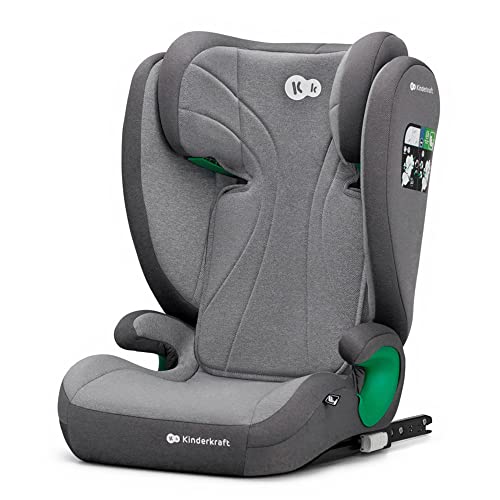15 Interesting Facts About Pram Vs Pushchair That You Never Knew
Pram vs. Pushchair: Understanding the Key Differences
When it concerns transporting babies and young kids, moms and dads typically find themselves overwhelmed by the different choices readily available. Among these choices, prams and pushchairs are 2 of the most typical kinds of baby transport. While the terms are frequently used interchangeably, each has distinct features and advantages that cater to diverse parenting needs. In Foldable Double Pram , we will check out the essential distinctions in between prams and pushchairs, helping parents make informed choices about which is best fit for their household.
What is a Pram?
A pram, or perambulator, is a type of baby carriage developed mostly for newborns and infants. Luxury Prams For Babies include a totally flat lying position, which is essential for newborns who need to lie flat for back advancement. The majority of prams come geared up with a deep, enclosed body that provides a cozy and secure environment for the baby, often with additional features such as hoods or covers to shield them from the elements.
Secret Characteristics of Prams:
- Flat Lying Position: Supports healthy back advancement in newborns.
- Confined Design: Protects the baby from wind and sunshine.
- Conventional Aesthetic: Often made from materials like wicker or material, offering a timeless appearance.
- Weight and Bulkiness: Generally heavier and bulkier than pushchairs.
What is a Pushchair?
A pushchair, likewise referred to as a stroller or buggy, is developed for older babies and toddlers who can stay up unassisted. Pushchairs permit for several seating positions, consisting of reclining alternatives for naptime. They are typically lighter and more agile than prams, permitting parents to browse hectic locations with ease. Numerous pushchairs include adjustable deals with, storage compartments, and can frequently be folded for hassle-free transportation.
Key Characteristics of Pushchairs:
- Seating Position: Designed for children who can stay up, with numerous reclining positions.
- Light-weight and Compact: Easier to maneuver and transport.
- Adaptability: Many models are convertibles or can accommodate safety seat.
- Storage Features: Often include baskets for bring diaper bags, toys, and so on.
Secret Differences Between Prams and Pushchairs
Below is a comparative table highlighting the crucial distinctions in between prams and pushchairs.
Function
Pram
Pushchair
Target Age
Newborns to 6 months (flat position required)
6 months to toddler age (sitting unassisted)
Design
Enclosed, standard design
Open, contemporary design
Weight
Much heavier, bulkier
Lighter, more compact
Seating Options
Flat only
Several positions consisting of reclining
Manoeuvrability
Less maneuverable due to weight
Highly maneuverable
Storage Space
Restricted
Generous underneath baskets
Selecting Between a Pram and a Pushchair
Consideration Factors:
- Age of the Child: Choose a pram for newborns and a pushchair for older babies and toddlers.
- Planned Use: If you prepare to do a lot of strolling or browsing city streets, consider a design that fits your way of life.
- Space: Assess the offered storage in your home or car and how compactly a model can fold.
- Budget: Consider the price variety, as prams and pushchairs can differ commonly in expense.
- Features: Look for additional functions that might be helpful for your daily life, such as cup holders, canopies, or simple folding systems.
Benefits and Disadvantages
Benefits of Prams
- Perfect for Newborns: Encourages healthy spine development.
- Comfy Space: Provides a relaxing environment for infants.
Drawbacks of Prams
- Weight: Heavier and bulkier, making them less practical for daily usage.
- Limited Use Time: Generally beneficial just for the very first six months.
Advantages of Pushchairs
- Adaptability: Suitable for longer periods as the kid grows.
- Lightweight Design: Easier to bring and navigate.
Drawbacks of Pushchairs
- Not Suitable for Newborns: Requires the child to be able to sit up unassisted.
- Less Protective: Generally more exposed than a pram.
Frequently Asked Questions (FAQs)
1. Can I use a pushchair for a newborn?
The majority of pushchairs are not created for newborns; nevertheless, lots of designs include infant cars and truck seat adapters. Luxury Prams For Babies use a totally reclining seat alternative that might be suitable for infants, but make sure the manufacturer validates it's safe.
2. Which is much better for travel?
Pushchairs are typically chosen for travel due to their light-weight and compact nature. They can typically be folded easily for transport on public transportation and fit more readily in automobile trunks.
3. The length of time can I utilize a pram?
Prams are usually appropriate for babies up until they reach around 6 months of age or when they can support themselves in a seated position.
4. Exist hybrid designs available?
Yes, numerous manufacturers produce hybrid models that can be converted from a pram to a pushchair depending upon the child's advancement stage.
5. What should I try to find when purchasing a pram or pushchair?
When acquiring, think about security functions, ease of use, durability, weight, and storage. It's also recommended to test various designs for comfort before deciding.
Selecting in between a pram and a pushchair ultimately depends upon the age of your child and your lifestyle choices. Understanding their differences helps moms and dads make notified options that deal with their household's needs. Parents can delight in the journey of being a parent by ensuring that their child's comfort and security are constantly prioritized, while also considering their own convenience and style.
